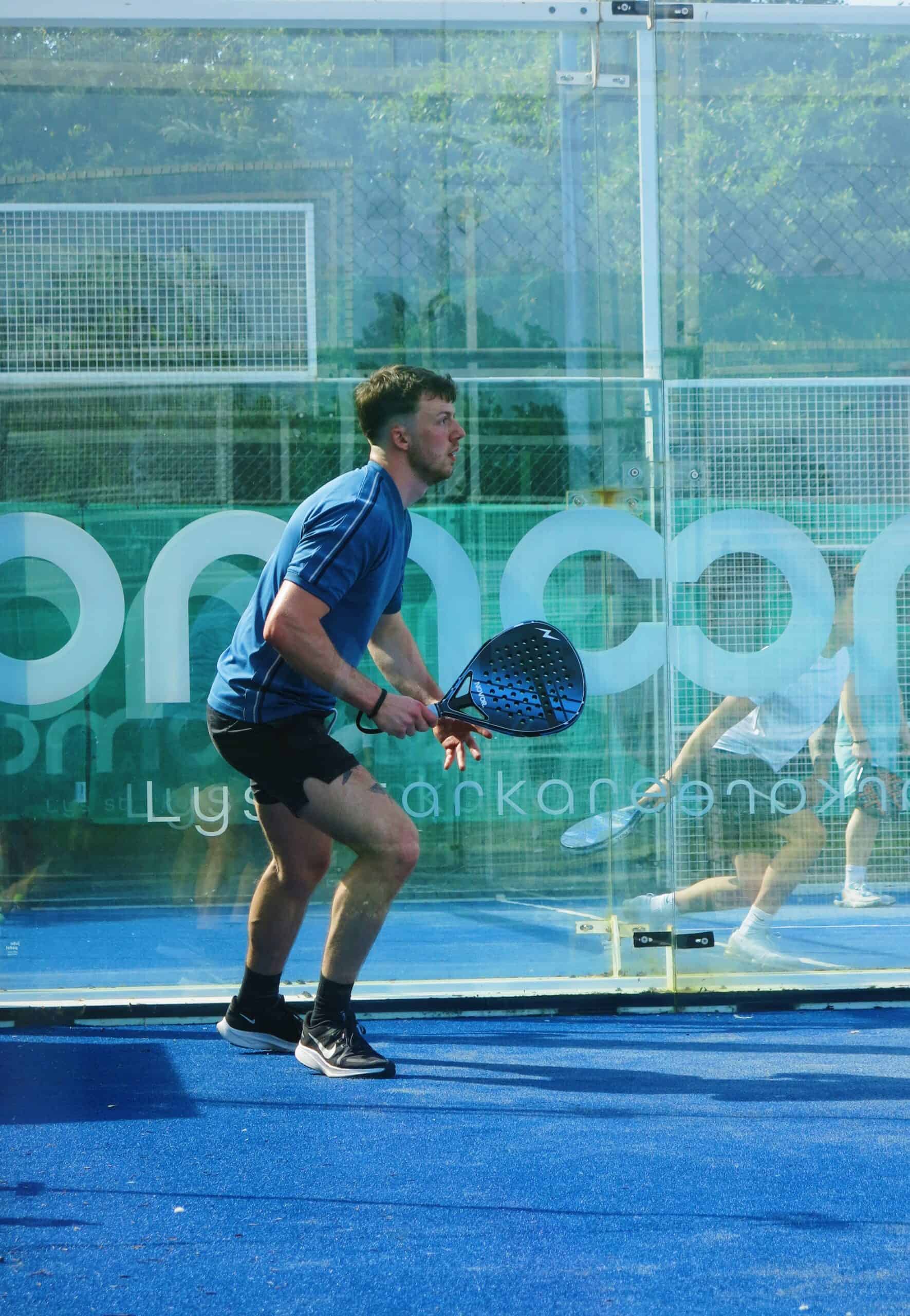
Padel tennis, a racket sport that has been gaining popularity around the world, often sparks a debate among sports enthusiasts. Is it more similar to squash or traditional tennis? In this blog we will discuss the debate from both viewpoints as it is ultimately determined by the player!
Court Size and Shape – One of the primary arguments in favour of padel tennis being closer to squash is the court size and shape. Padel tennis courts are roughly 25% smaller and enclosed by glass walls, much like squash courts. This confined playing space requires players to rely on precise shots and quick reflexes, similar to the tactics used in squash.
Rally Length – Padel tennis rallies are often longer and more intense than those in traditional tennis. Players in both squash and padel tennis need to maintain a continuous rally with limited opportunities to end points quickly. In contrast, tennis points can be shorter due to the larger court size and faster ball speed.
Use of Walls – Both padel tennis and squash involve using the walls strategically during gameplay. In squash, players hit the ball off the front wall, while in padel tennis, the glass walls come into play, requiring players to angle their shots effectively. This wall aspect is a common factor between padel tennis and squash, setting them apart from traditional tennis and is a big factor in players eyes when determining whether it’s closer to one or the other.
Scoring System – The scoring system in padel tennis closely mirrors that of traditional tennis, with points scored in a similar manner (15, 30, 40, and game). In squash, on the other hand, the scoring system is different, with each rally potentially earning a point.
Serve and Volley – In padel tennis, players often employ a serve-and-volley strategy, similar to traditional tennis. This involves serving the ball and then advancing towards the net to volley the return. Squash, on the other hand, typically doesn’t involve the serve-and-volley strategy as frequently as padel tennis or tennis.
Racket and Ball – The rackets used in padel tennis are the unique factor when comparing the two sports as they are vastly different. Both tennis and squash rackets are both made with predominantly nylon, whereas padel tennis rackets can come in a range of different materials. The ball used in padel tennis is very similar to a traditional tennis ball and is very hard to tell apart. They are very similar in size and material to a tennis ball and just have a few differences such as the pressure. Squash on the other hand uses a much smaller rubber ball.
Net Height – The net height in padel tennis is the same as in tennis which forces the player to ensure they hit it high enough. Squash on the other hand does not have a net and is played in an open room with surrounding walls creating a completely different strategic mindset in matchplay.
Overall, the debate over whether padel tennis is closer to squash or tennis depends on the aspects of the sport one chooses to emphasise. While the court size and enclosed playing space align more with squash, factors like scoring systems, racket and ball similarities, and serve-and-volley strategies draw parallels with traditional tennis. Ultimately, padel tennis is a unique sport that combines elements from both squash and tennis, making it a distinct and exciting racket sport in its own right. This is a big factor in why so many people love it!
Managing Director
We’re dedicated to upholding the highest standards of customer service and delivering on providing premium padel rackets. Please explore our extensive list of reviews to see what our customers have to say!
Super, top quality gear and a super helpful team. Have definitely secured my future business. 🤩
I had the chance to try the Novor padel racket last weekend and I was very surprised with the quality, weight and it’s balance distribution. Very good relation price quality and highly recommended. Very good effort and work developing their first official product by the guys of Novor!
What a stunning racket. Very good price, especially for a carbon racket, delivered in 2 days, comes with a nice bag. Beautifully designed and made, looks the business and feels very nicely weighted. Can't fault it. I just need to get better at the game to justify having such a nice piece of kit!

Elevate your padel game with Novor – Precision | Power | Performance. Unleash your potential with our padel rackets designed in London.
VirtualRock Ltd trading as Novor (™) 2023 . All Rights Reserved